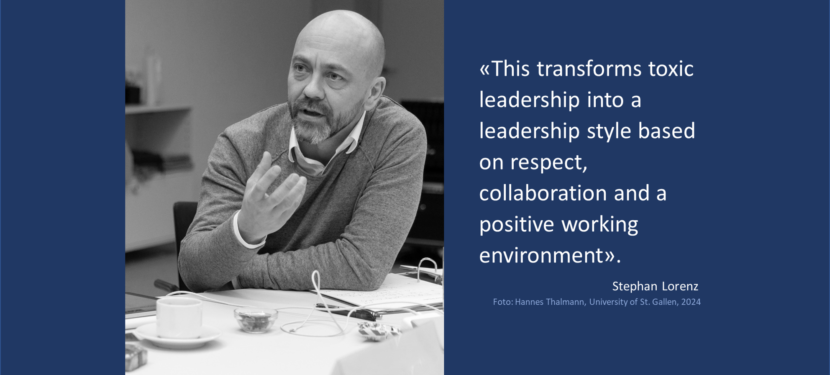Who hasn’t heard this before: ‘Good employees often leave the company because of their line manager’. Perhaps you have already had this experience yourself or are currently facing such a situation?
Gallup statistics and surveys show that toxic leadership, i.e. a negative management style, has a significant impact on employee turnover. One of the frequently quoted Gallup results states that around 50% of employees who resign do so because of their manager.
This figure suggests that a significant proportion of employees who leave an organisation do so because of poor leadership. Factors such as lack of appreciation, lack of support, inappropriate behaviour and unrealistic expectations all play a role.
This correlation emphasises the importance of a positive and supportive leadership culture in companies in order to increase employee retention and reduce the turnover rate.
Toxic leadership refers to harmful leadership practices and behaviours that can negatively impact the work environment and jeopardise the success of teams and organisations. Toxic leaders are characterised by manipulative, authoritarian and destructive behaviours that affect the well-being and performance of employees.
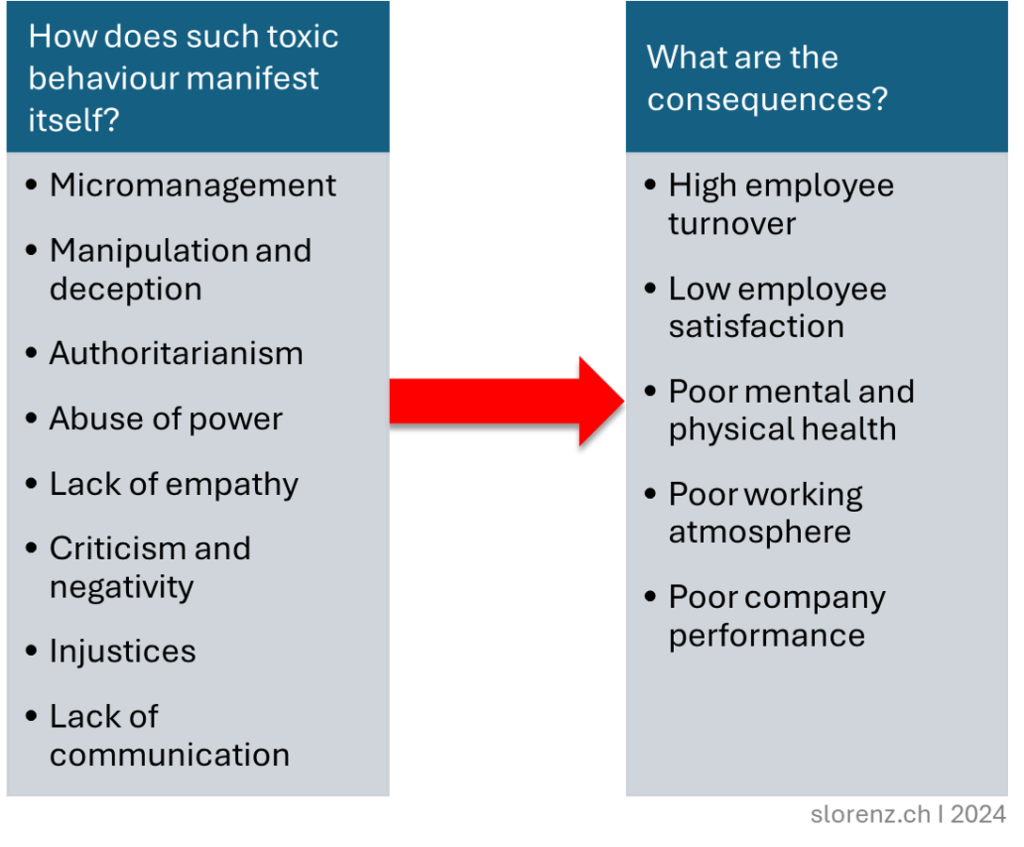
❓ But how does toxic leadership develop?
Toxic leadership often develops gradually and can be favoured by various factors.
⛔️ Firstly, it can arise from an unthinking assumption of power and authority, where the manager believes that control and pressure are the best means of achieving results. A lack of emotional intelligence and a lack of self-reflection contribute to the emergence of negative behaviours such as micromanagement, criticism instead of support and a lack of appreciation.
⛔️ In addition, external factors such as high pressure to perform, poor corporate culture or unclear expectations can reinforce the development of a toxic leadership style.
⛔️ Over time, these behavioural patterns lead to a tense working atmosphere in which mistrust, fear and demotivation grow, further fuelling the cycle of toxic leadership. The company suffers from a decline in productivity and innovation.
👉 The development of toxic leadership is therefore a complex process that is influenced by a combination of personal, organisational and cultural factors.
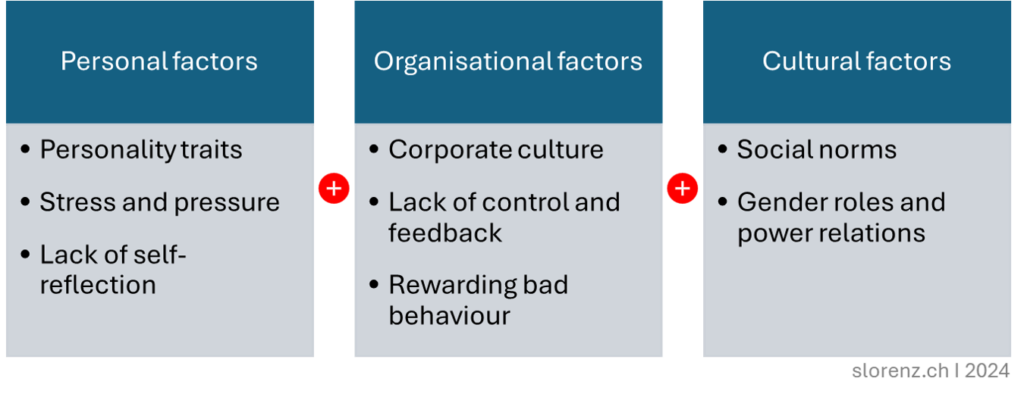
❓ What stages of development do they actually go through and how do the behavioural patterns manifest themselves?
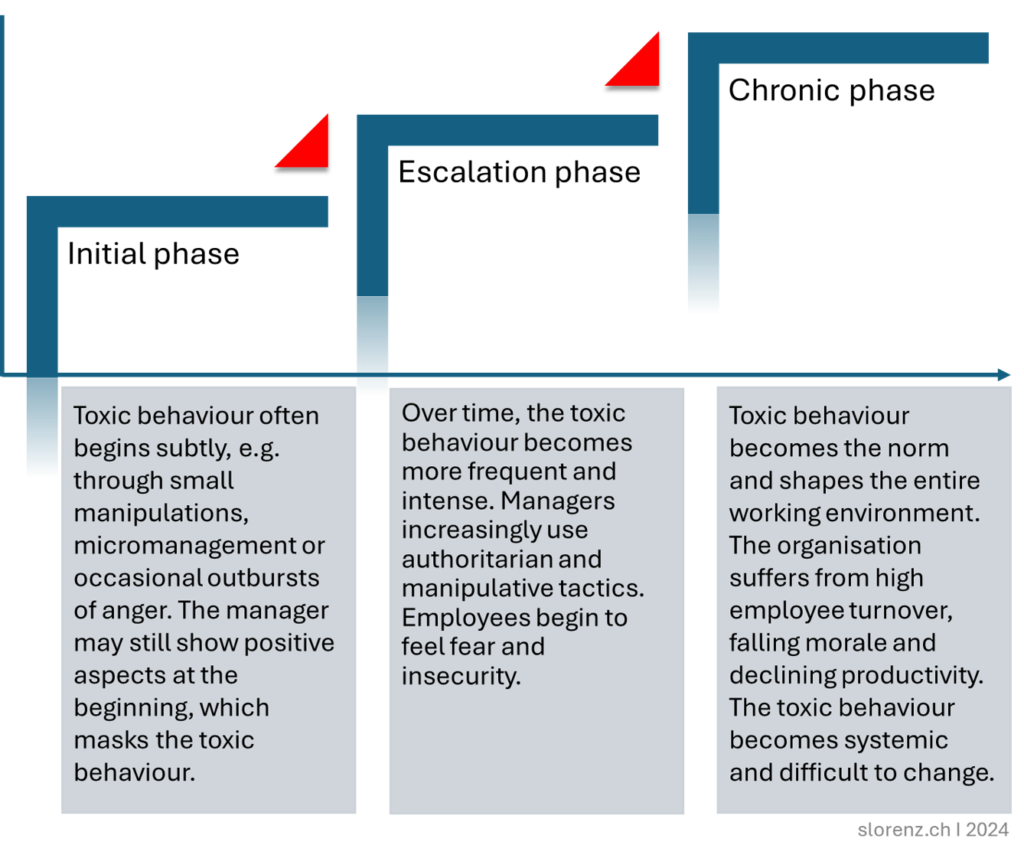
❓ How can this be remedied?
💡 Early detection and intervention, a strong corporate culture and ongoing leadership development are critical to preventing toxic behaviour and promoting a healthy, productive work environment.
💡 Companies must take appropriate measures to eliminate toxic behaviour and promote a culture of positive and effective leadership.
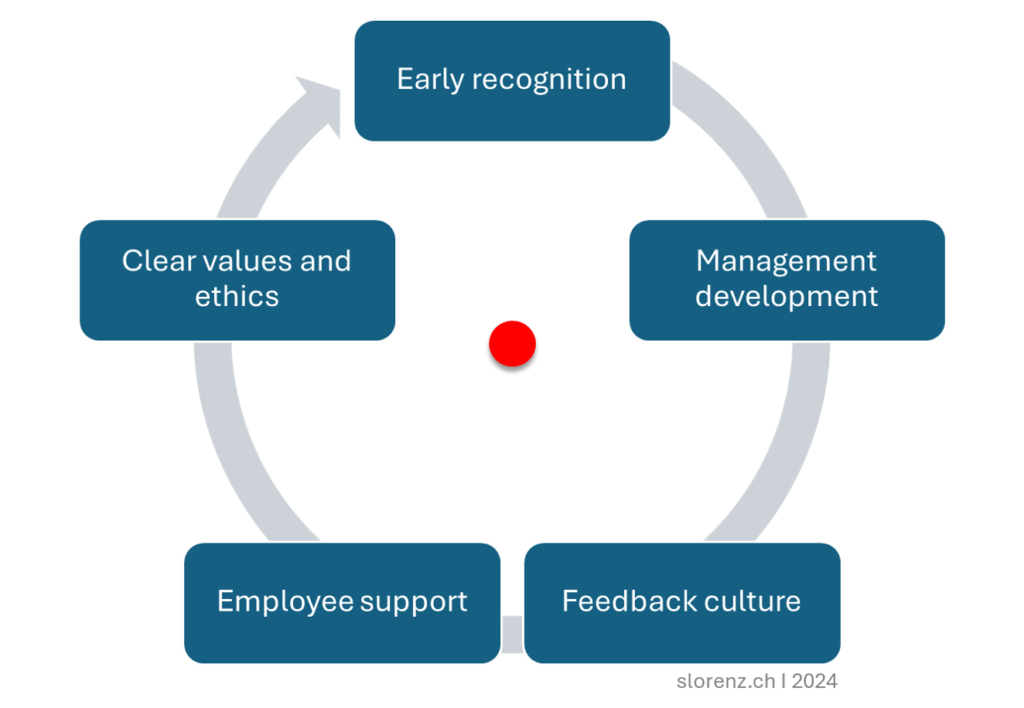
💡 Furthermore, leadership coaching can play a crucial role in eliminating toxic leadership as it helps leaders become aware of their behaviours and develop alternatives. It starts with leaders reflecting on their own patterns and the impact of their behaviour on their team.
🔎 Through targeted questions and feedback, coaching helps to sharpen self-awareness and recognise toxic patterns that may be deeply ingrained. In the coaching process, managers learn to communicate more empathetically and promote a culture of trust and openness.
🔎 By practising and continuously reflecting on new behaviours, they can gradually create a positive and supportive working environment that strengthens the well-being and motivation of employees.
🎯 This transforms toxic leadership into a leadership style based on respect, collaboration and a positive working environment.
What are your experiences? Are you currently in a decision-making process? If you wish, I am available for a non-binding call to see if we can find a common path for your challenges.
Take care & best regards
Stephan


